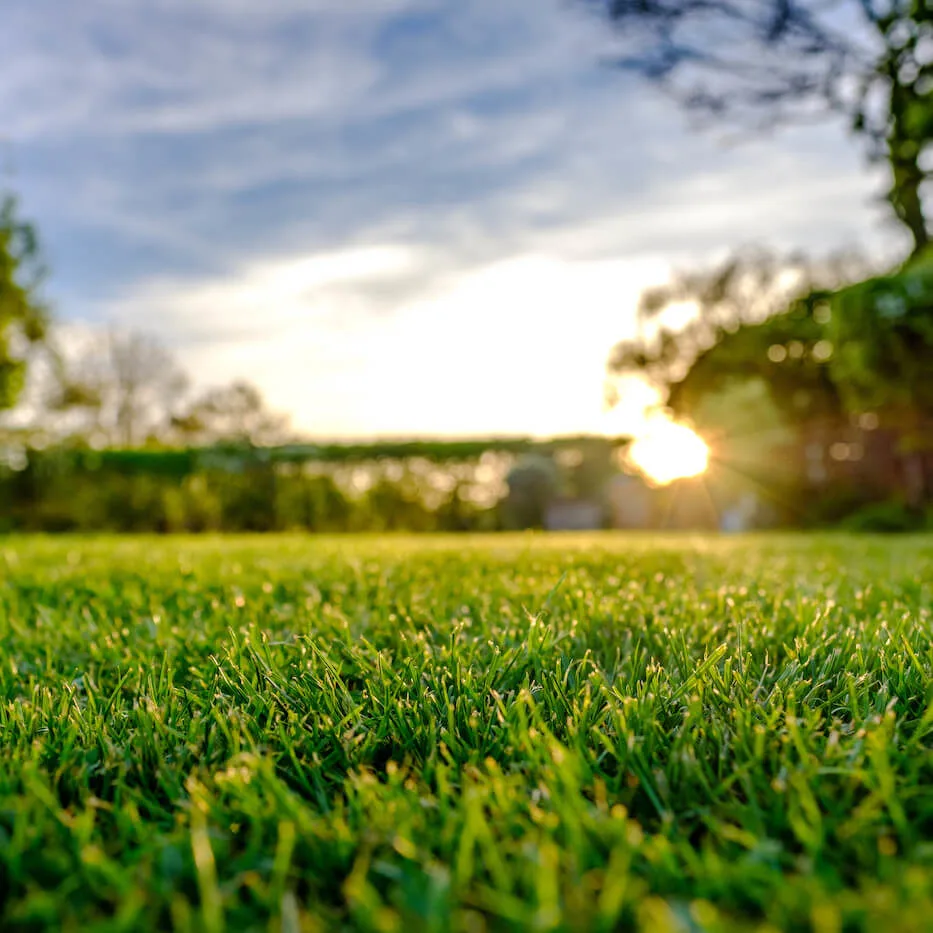A great lawn that is the envy of the neighborhood is something most homeowners want. Even if your home is not the biggest or most flamboyant in your area, a well-kept and healthy lawn can radically boost its attractiveness. But this type of lawn is not achieved by intermittent lawn care and without defined goals. A well-planned Lawn Maintenance Checklist can keep you on track for each season and help you reach those healthy lawn goals!
Creating and maintaining a lawn that is the focus of eyes takes planning and organization, explains Dawson Management. And the effort toward making that lawn must span the four seasons of the year. You must create a detailed plan for spring, summer, autumn, and even winter, when your lawn is most likely going to be under a layer of snow.
That plan will take the changing needs of your lawn and the soil underneath into consideration. It will preempt the needs of the lawn and potential problems before they arise. Yet at the same time, it will be simple and without stress, because you will be preventing weeds and diseases instead of treating them.
As a special gift, we have created just that type of lawn maintenance plan for you. We have done the work of thinking through the intricacies of maintaining your lawn for every month of the year. Following this comprehensive plan will let you finally jumpstart your journey to creating the type of lawn you have always wanted but never had the know-how to create. Enjoy!
Spring Lawn Care
- Inspect the lawn after the snow has melted and the rain has started to fall. Check whether the lawn needs aeration or if there are puddles forming on it.
- Prepare lawn tools and equipment. Check your mower for fluid levels, blade height, and sharpness. Check that the leaf blower and other tools are in good order.
- Test the soil pH. For the best grass growth, your soil pH should be 6.5. It should have proportions of phosphorus, nitrogen, and potassium salts appropriate for your region. Having a professional test the soil will help you avoid wasting money on fertilizer and needless soil amendments.
- Do spring dethatching by removing dead grass, leaves, branches, twigs, and debris in order to stimulate airflow and improve nitrogen exchange.
- Apply fertilizer with pre-emergent herbicide before temperatures get higher. Follow up with high-nitrogen fertilizer and selective weed control (spot spraying).
Summer Lawn Care
- The lawn needs about an inch of water weekly to thrive. When the weather gets hot, dry, and windy, evaporation rates increase, and watering rates must be increased to compensate for these losses. Increase watering times as needed to ensure water penetrates 1 inch into the soil.
- Maintain the lawn at the proper height; never cut your grass lower than 2-2 ½ inches above the ground. Lower than that creates room for weeds. Longer grass protects the soil beneath and produces more chlorophyll.
- Take care of the bugs. Summertime is bug infestation season, but do not use broad-spectrum insecticides that don’t discriminate between pests and beneficial insects. Granular pest control that targets specific bugs is better. Organic pesticides are best.
- Solve mystery spots, which are not always caused by under-watering. Sometimes a fungus is the real culprit. Take shots of the spot and send the photos to your nursery for their opinion.
Fall Lawn Care
- Lower mower levels from summer levels and keep grass shorter until growth eventually stops. At the same time, reduce the amount of watering. Continue watering to keep the lawn hydrated but do not water to the point of saturation.
- Dethatch with a dethatcher that is clean and in good condition. Dethatching at this time is important, especially if you didn’t do it in spring. But be careful not to set the tines so deep that they destroy the lawn. The goal is to remove yellowish dead grass that blocks air and moisture. It is better to make 3-4 shallow passes.
- Reseed, if necessary. First till the soil before applying your seeds. Afterward, apply a thin layer of compost and keep the area moist. Do not let your seed dry out or they may die.
- Rake leaves to allow more sunlight to reach grass roots and keep the shoots strong going into winter. Apply a winterizer or a stage-4 fertilizer to keep the grass nourished through the winter.
Winter Lawn Care
- Most, but not all of your work is done. During winter your work will be done away from the lawn and will mostly involve preparing for spring. This is when you take a break to become more informed about how to better manage your lawn. When doing research or looking for information, remember that grass care depends on the part of the country where you are, so pay more attention to local resources.
- Start prepping for spring and you can do this by preparing your tools and equipment – clean and repair your equipment. Follow the manufacturer’s instructions when storing tools and equipment. If the instructions say you should leave the equipment with a full tank of gasoline, add a fuel stabilizer to prevent chemical-decomposition.
- Stake the lawn perimeter to reduce or prevent gouging by snow throwers and plows. Keep the use of de-icing chemicals to a minimum.
There you have it, a comprehensive all-year-round guide to maintain your lawn to keep it in tip-top shape all year!
Be sure to visit some of the Agape Lawn Company Maintenance Plans and Services!!
https://agapelawnco.com/complete-maintenance-plans/


